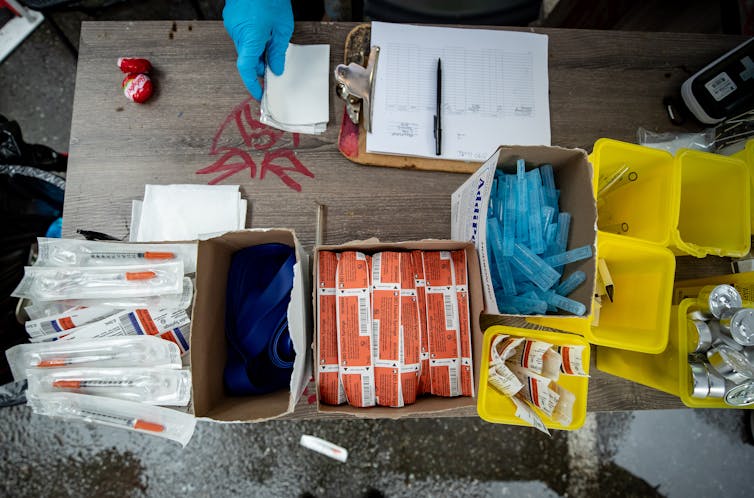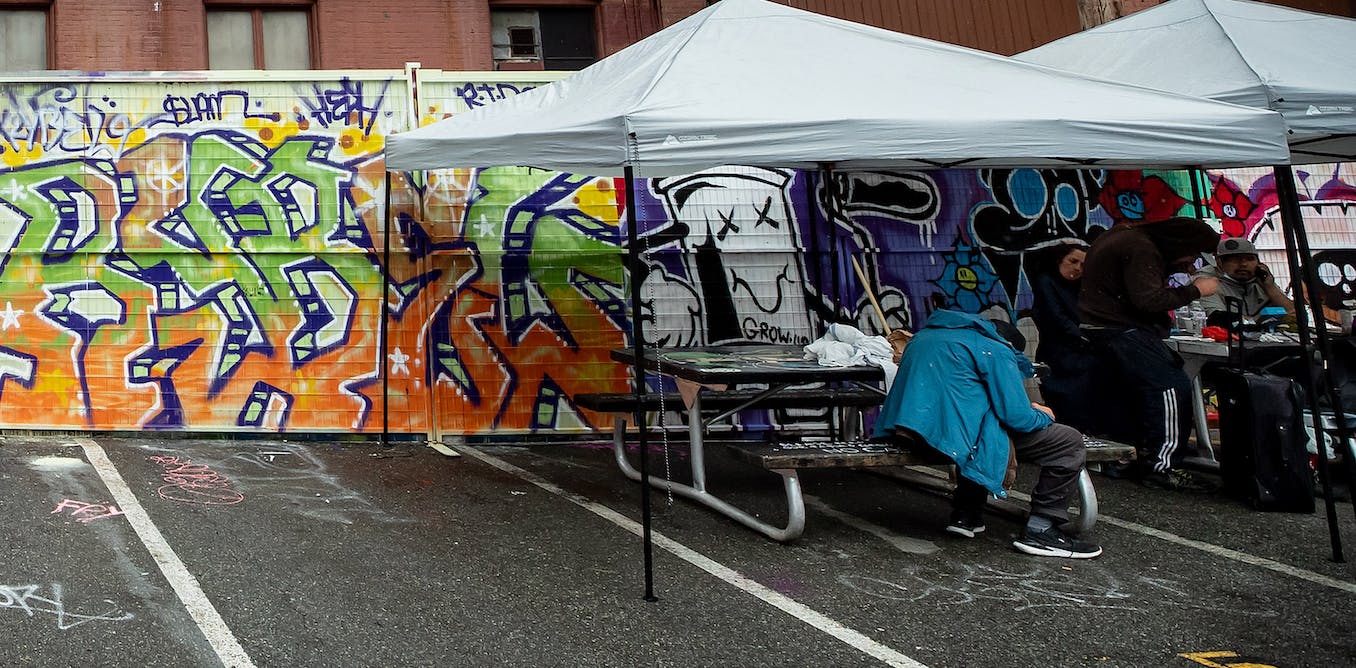On the same day that British Columbia began a new era in drug policy with the decriminalization of simple possession of some drugs, the province’s chief coroner provided a devastating update about the number of lives lost to illicit drugs during the previous year.
On Jan. 31, 2023, B.C. began a three-year pilot project under which simple possession of some drugs (opioids, methamphetamine, cocaine and MDMA) can no longer lead to criminal prosecution or even seizure of the drugs by police. The policy applies to possession of up to 2.5 grams of substance for personal use.
While a major step in the right direction, decriminalization does nothing to tackle what is fuelling the drug-poisoning crisis: the makeup of a toxic and unregulated drug supply.
In fact, imposed carry restrictions of 2.5 grams could theoretically lead to unintended consequences as drugs become more potent to fit within legal limits.

THE CANADIAN PRESS/Darryl Dyck
The stated goal of the decriminalization policy change is to remove the stigma associated with drug use to encourage people to seek help when they need it.
While the effects that decriminalization may have on the stigma of drug use remain to be seen, what it won’t affect is the toxicity of the drug supply that is killing thousands of Canadians each year.
Inconsistent and unreliable drug supply
Chemical analysis of drugs (such as from drug checking or police investigations) can tell us what is circulating in the supply, but toxicology results from those who have died from overdoses tell us what is actually causing death.
These data sources describe how increases in adulteration of drugs with fentanyl analogues, benzodiazepines and animal tranquilizers like xylazine are driving the drug poisoning crisis.
Fentanyl has been the main opioid sold on the unregulated market for several years. It is typically sold mixed into other powders like caffeine or sugars to make a final product.
Drug supply monitoring has shown that fentanyl concentration in these powders sold on the street can range from zero to nearly 100 per cent, with a standard sample in B.C. being around 10–15 per cent.
Research conducted in Vancouver has described how fentanyl concentration in these samples was somewhat consistent between 2018 and early 2020, with variability between samples even decreasing over that period. What that may speak to is producers of fentanyl reaching a sort of “sweet spot” that satisfies their customers. People who sell drugs have described how they listen to feedback from their regulars and adjust the product to meet their customers’ needs.

THE CANADIAN PRESS/Darryl Dyck
However, following the start of the COVID-19 pandemic, variation in potency between fentanyl samples rose dramatically, leading to further unpredictability. These changes to the fentanyl supply around the spring of 2020 coincided with rates of drug poisonings previously not seen in the province.
Under B.C.’s decriminalization framework, possession for personal use caps at 2.5 grams of substance. While 2.5 grams may be more than enough MDMA for a night out, it may not be enough heroin to last a single day for someone who has a high opioid tolerance. People who use drugs say that to abide by these limits, they will be forced to make more frequent, smaller purchases. With the drug supply as volatile and unpredictable as it is, every new purchase puts someone at risk.
Legal limit may affect potency
Since we know that the drug supply is dynamic, it raises a question: Will the imposed legal carry limit of 2.5 grams result in increased potency of fentanyl to fit within the new 2.5-gram threshold?
Increases in average potency of fentanyl has been shown to be linked to increased drug poisonings in the same geographic area. If the unregulated fentanyl market adjusts to fit more active ingredient into a smaller package, there will be downstream effects on people lives.

THE CANADIAN PRESS/Chad Hipolito
The provincial and federal governments have committed to a data-driven approach to decriminalization. Ongoing drug supply monitoring will help public health professionals characterize what changes occur to the unregulated drug supply as a result of the policy change. Yet the act of decriminalizing drugs for personal use does not have any direct effect on the cause of the ongoing poisoning crisis.
The consensus among experts has consistently pointed to unpredictable drugs from an unregulated supply and the absence of a functioning addiction treatment system. For those who want to seek treatment, the lack of available space leaves people waiting, once again left to rely on the toxic drug supply.
If B.C. is serious about confronting the leading cause of unnatural death in the province, it is going to take far more than decriminalizing simple drug possession. People who use drugs require an alternative to the toxic unregulated supply to not be risking their lives every time they use drugs.
Increasing access to a safer supply of drugs through a variety of formats and providing meaningful funding for accessible treatment options are some examples of ways the province can take immediate steps to make an impact.
In the meantime, six more people will die today from a drug poisoning in B.C. And another six will die tomorrow. How many more days can this go on?




